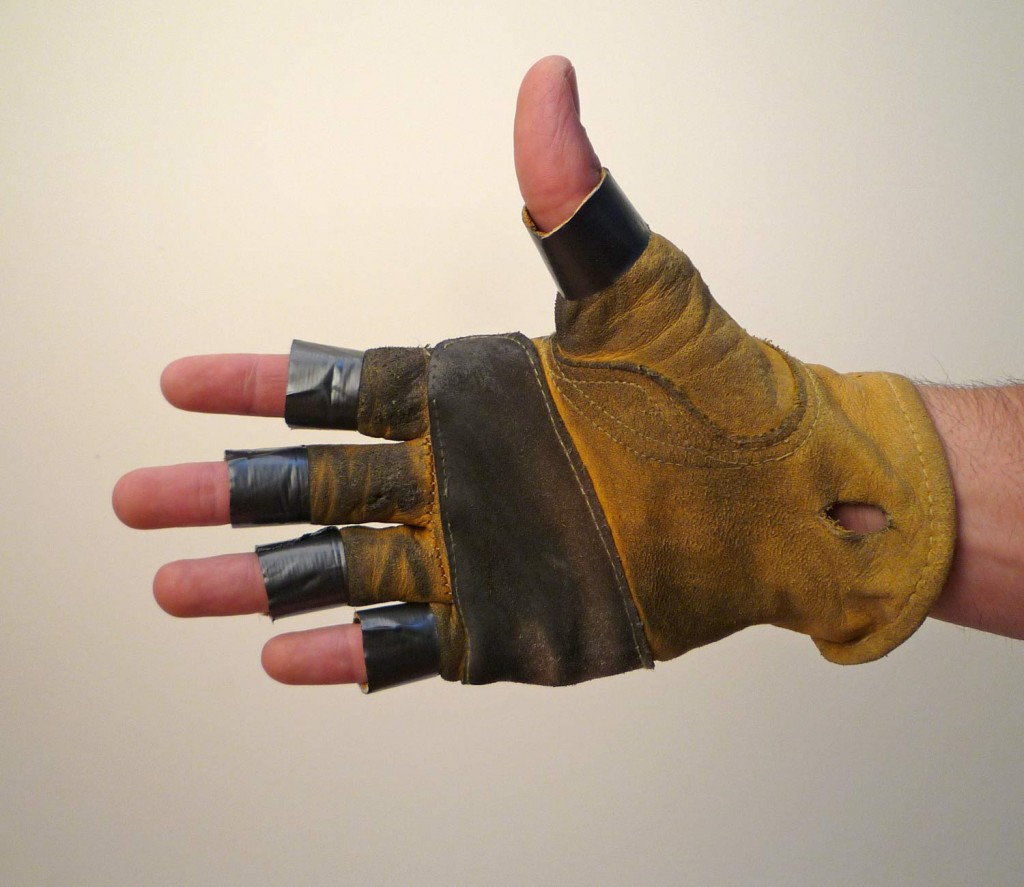This is the cheapest way to get a fingerless leather glove for big wall climbing. While almost any glove can be turned into a big wall glove, it helps to start with a quality option like the Wells Lamont. They are durable, have a good fit, are inexpensive, and is widely available. Fit is crucial. And if you find a construction glove that fits better, go with that.
It is hard to beat these for the money, especially considering you can sometimes make them for nothing if you already have a pair of gloves lying around. They work and will get you up walls. That said, a pair of gloves specifically made for wall climbing will offer better grip, dexterity, and durability. If you have the money, get a pair of our highest rated fingerless gloves. If you are on a budget or just want the fun of making gear, making fingerless gloves is one of the easiest ways to shrink your big wall budget. Another good option is burly mountain bike gloves that usually give better dexterity at the expense of some durability.
Likes
The best thing about homemade fingerless leather gloves is you often don't need to buy them. Got a pair of gardening gloves lying around the garage? You are good to go. If you have to buy a pair, they're often cheap and available at any gardening, hardware or drug store. As long as you get a tight fit, dexterity is good . Buy them tighter than you think as they will stretch. The leather on these Wells Lamont gloves is soft yet the padded palm holds up well.
The other great thing about these is you are making gear. No, it's not like being John Salathé and pounding out pitons in your shop. But in a minor way you're taking part in that age-old tradition of making your own vertical gear. It used to be that you had to make your own big wall gloves. Now that there are so many fingerless gloves available, it's more choice than a necessity (or a necessity brought on by low funds).
Dislikes
The main problem with homemade fingerless gloves is the area around the fingers. If you don't use duct tape, the seams will start to unravel after one pitch. If you do use duct tape, there is a slick surface at the edges. The gloves are also hard to get on and off. This is not a big deal, but it is one of the drawbacks to saving money by making your own. Also, there is room for user error when cutting your gloves. Even in the pair I made for the photos you can see that not all the fingers are cut to the same length. There is the real chance you might botch a pair, especially if it's your first time making them. In that case, your cost savings start to evaporate.
Avoid gloves that are too loose as they will work… but make it more likely you will fumble and drop stuff. It is possible to find leather gloves with a Velcro closure, but at that point, you are probably spending so much money you should buy some climbing specific ones. A loose fit doesn't matter if you're just belaying. But if you are handling biners, fit is crucial. While most gloves don't come with a wrist clip, this is easily remided by cutting a tiny slit with a knife or scissors.
Best Application
If you size them perfectly and cut off the fingers just right, these gloves will last you 5 to 10 big walls. They are ideal for anyone who is on a budget, is doing only a few walls, or just wants the joy of making their gear. For generally rappelling or belaying, it is better to have a full-fingered glove. With this gloves, your fingers will turn black after extended biner and rope handling.
Value
If you just walk into a hardware store, these can be either pretty expensive or a good deal; it's hit or miss.
How to make fingerless gloves
Fingerless leather gloves often start to make themselves. The first part to wear out on a pair of gloves is the finger tips. That is a good time to turn them into fingerless gloves by cutting off the tips. See the photos above to see how it is done. Remember that all gloves stretch. I usually wear a medium or large ski glove but will always buy small leather gloves. I like them tight at first so they will stretch out just right and give great dexterity. It is almost impossible to buy fingerless gloves that are too small because they eventually stretch out.



